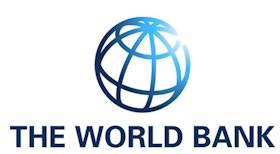Growth in developing East Asia and Pacific is projected to remain strong at 5 per cent in 2023 but will ease in the second half of 2023 and is forecast to be 4.5 per cent during 2024, the World Bank said on Sunday in its semi-annual economic outlook for the region.
According to the World Bank’s East Asia and Pacific October 2023 Economic Update, regional growth this year is higher than average growth projected for all other emerging market and developing economies but lower than previously projected. Growth in China in 2023 is projected to be 5.1 per cent and in the region excluding China to be 4.6 per cent. Growth among Pacific Island Countries is expected to be 5.2 per cent.
In 2024, improving external conditions will help growth in the rest of the region but persistent domestic difficulties in China – the fading of the bounce back from the re-opening of the economy, elevated debt, and weakness in the property sector, structural factors such as ageing – will weigh on growth in China, slowing it to 4.4 per cent in 2024. Growth in the rest of the region is expected to edge up to 4.7 per cent in 2024, as recovery in global growth and easing of financial conditions offsets the impact of slowing growth in China and trade policy measures in other countries.
An intensification of geopolitical tensions, and the possibility of natural disasters, including extreme weather events, are additional downside risks to the region’s economic outlook.
“The East Asia and Pacific region remains one of the fastest growing and most dynamic regions in the world, even if growth is moderating,” said World Bank East Asia and Pacific Vice-President Manuela V. Ferro. “Over the medium term, sustaining high growth will require reforms to maintain industrial competitiveness, diversify trading partners, and unleash the productivity-enhancing and job-creating potential of the services sector.”
The services sectors can play an increasing role in driving development in a region known for manufacturing-led growth, a Special Focus section of the report says. Services sectors have already become key contributors to aggregate labour productivity growth over the last decade. Services exports have grown faster than goods exports. And the growth of foreign direct investment in services has exceeded that in manufacturing by a factor of five in China, Indonesia, Malaysia, the Philippines, and Thailand.
The diffusion of digital technologies and services reforms are improving economic performance. In the Philippines, the adoption of software and data analytics by firms increased the productivity of firms by 1.5 per cent on average over the period 2010-2019. In Vietnam, the reduction in policy barriers such as restrictions on foreign entry and ownership in transport, finance, and business services led to a 2.9 per cent annualised increase in value-added per worker in these sectors over the 2008-2016 period. The elimination of such barriers also led to a 3.1 per cent increase in labour productivity in the manufacturing enterprises that use these services, benefiting small and medium private enterprises most significantly.
The combination of services reform and digitalisation is not only creating new opportunities, it is also enhancing the capacity of people to take advantage of these opportunities. For example, distance education and telemedicine supported by well-selected, trained, and motivated local staff have led to better learning and health outcomes in the region, though there remains significant inequality in access.
“Services reform and digitalisation can generate a virtuous cycle of increasing economic opportunity and enhanced human capacity, powering development in the region,” said World Bank East Asia and Pacific Chief Economist Aaditya Mattoo.
Publish your content with EB Premium
It's not about how many you reach. It's about who. Get your news, events, jobs and thought leadership seen by those who matter to you.


















